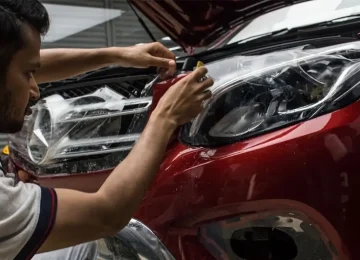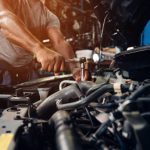A vehicle’s sway bar links are essential for maintaining suspension system stability, especially when navigating corners and rough terrain. Selecting aftermarket or Original Equipment Manufacturer (OEM) sway bar links can have a big impact on the longevity and performance of your car. Making an informed choice can be aided by being aware of the variations in material options and performance.
Comprehending OEM Sway bar Links
The original car manufacturer produces OEM sway bar linkages. These parts are made to precisely match the vehicle’s requirements, guaranteeing a flawless fit and top performance. OEM sway bar links are usually made of materials that balance strength, flexibility, and longevity while adhering to the manufacturer’s specifications. High-grade steel, which provides exceptional durability and resistance to wear over time, is frequently used to make these parts. Because OEM links are thoroughly tested to work flawlessly with the overall suspension system, their performance is typically consistent. However, some car owners may be put off by their exorbitant price.
Examining Sway Bar Links Aftermarket
Third-party manufacturers make aftermarket sway bar linkages for a variety of automobiles. These linkages frequently include a variety of material choices, such as composite blends, steel, and aluminium. Numerous aftermarket additions aim to improve particular performance attributes, such weight reduction or increased stiffness for improved handling. Additionally, some aftermarket manufacturers include sway bar links that may be adjusted, enabling consumers to customize their suspension configuration. However, depending on the brand, aftermarket link quality might differ significantly; some may offer better materials and performance, while others may not meet OEM requirements.
Material Disparities and Their Effects
The strength, flexibility, and general performance of sway bar links are significantly influenced by the materials used in them. High-quality steel, which offers dependable endurance but might not offer many customizing choices, is frequently used in OEM links. On the other hand, aftermarket links frequently use cutting-edge materials like carbon composites or forged aluminium. Although these materials may be more expensive or require more regular maintenance, they can improve vehicle control and reduce weight. Furthermore, some aftermarket links come with enhanced bushings composed of polyurethane instead of rubber, which provide greater performance under stress and increased resistance to wear. This is where choosing Auto Repair in Salt Lake City, UT based service is essential.
Aspects of Performance
Performance is a crucial consideration when contrasting OEM and aftermarket sway bar linkages. For drivers looking for dependability and compliance with factory suspension systems, OEM links are perfect. On the other side, aftermarket linkages serve people who want to improve or alter the handling capabilities of their car. The decision between OEM and aftermarket links is based on your budget and driving requirements, regardless of whether stability, responsiveness, or durability are your top priorities.
Conclusion
In the end, choosing the best sway bar links necessitates striking a balance between cost, performance expectations, and material quality. There are clear benefits to both OEM and aftermarket choices, so it’s important to carefully consider your priorities.












